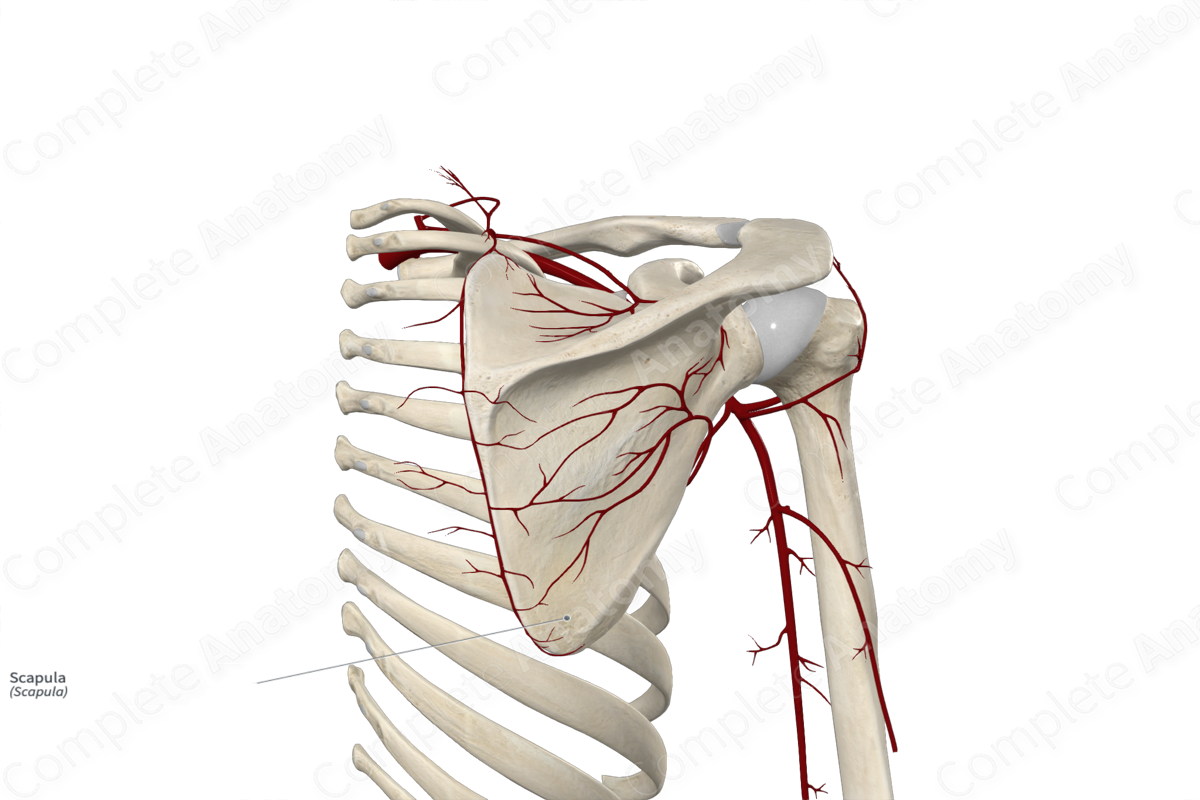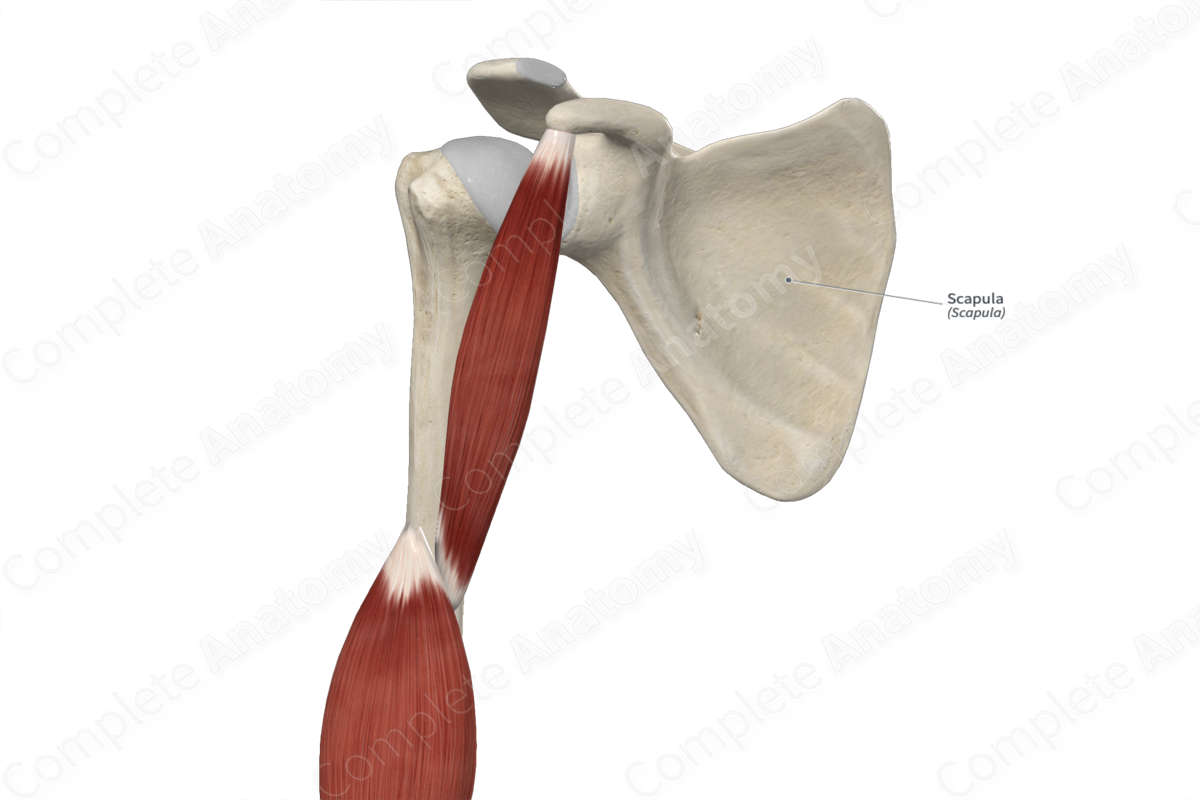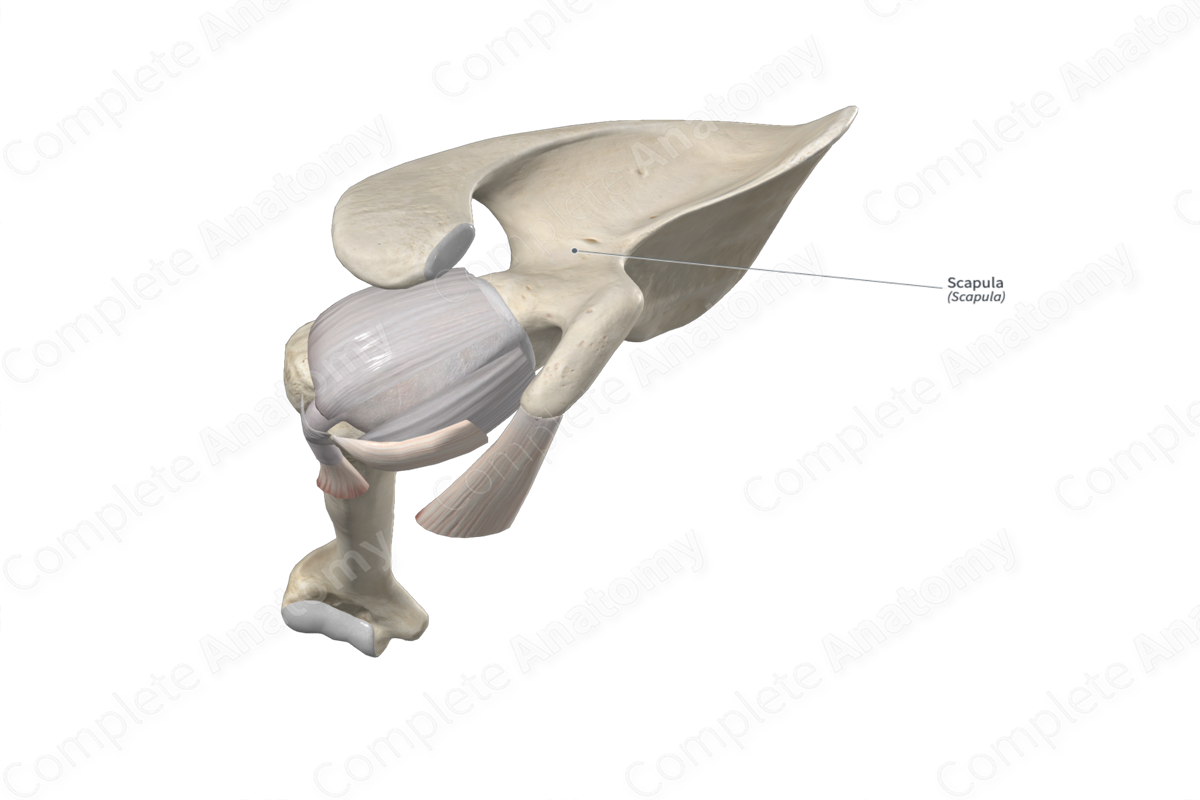
Quick Facts
Location: Pectoral girdle.
Bone Type: Flat bone.
Key Features: Head, neck, body, coracoid process, acromion, and glenoid fossa.
Articulates With: Clavicle and humerus.
Arterial Supply: Suprascapular artery.
Related parts of the anatomy
Key Features & Anatomical Relations
The scapula (or shoulder blade) is one of the two bones that form the pectoral girdle, the other being the clavicle. It’s a large, triangular bone that is found along the posterior aspect of the upper thoracic cage. It’s classified as a flat bone and includes the following bony features:
- parts: head, neck, body, coracoid process, and acromion;
- surfaces: costal and dorsal surfaces, and medial, lateral and superior borders;
- landmarks: spine, supraspinous and infraspinous fossae, glenoid fossa, and supraglenoid and infraglenoid tubercles.
More information regarding these bony features can be found in the Parts, Surfaces and Landmarks tabs for this bone.
The scapula is located:
- anterior to the trapezius, supraspinatus, and infraspinatus muscles;
- posterior to the second to seventh ribs and the subscapularis muscle.
It articulates with the:
- humerus at the glenohumeral (shoulder) joint;
- clavicle at the acromioclavicular joint.
Ossification
Ossification of the scapula occurs at eight ossification centers, these are found in the:
- body of the scapula, which appears in utero at the eighth week;
- coracoid process, two centers are located here and appear within the first year after birth;
- acromion, two centers are located here and appear during or after puberty;
- medial border of the scapula, which appears during or after puberty;
- inferior angle of the scapula, which appears during or after puberty;
- glenoid cavity of the scapula, which appears during or after puberty.
These ossification centers fuse with each other during middle to late adolescence (Standring, 2016).
Variations
In some individuals:
- the acromion can be quadrangular or falciform in shape;
- the tip of the acromion may occur as a separate bone, known as the os acromiale;
- foramina may be present in the body of the scapula, usually in its infraspinous fossa (Tubbs, Shoja and Loukas, 2016).
Surface Anatomy
The following bony features of the scapula are relevant to surface anatomy:
- the superior aspect of the acromion is subcutaneous;
- the crest of the spine of the scapula is easily palpable;
- the coracoid process can be located by deep palpation on the lateral border of the deltopectoral triangle;
- when the arm is in the anatomical position, the superior and inferior angles of the scapula can be palpated at the levels of the second and seventh thoracic vertebrae, respectively.
List of Clinical Correlates
- Fracture of scapula
- Dislocation of glenohumeral joint
- “Winging scapula”
- “Snapping scapula” syndrome
References
Standring, S. (2016) Gray's Anatomy: The Anatomical Basis of Clinical Practice. Gray's Anatomy Series 41st edn.: Elsevier Limited.
Tubbs, R. S., Shoja, M. M. and Loukas, M. (2016) Bergman's Comprehensive Encyclopedia of Human Anatomic Variation. Wiley.
Learn more about this topic from other Elsevier products





